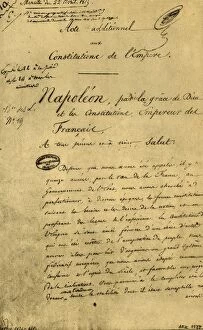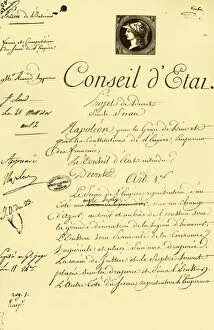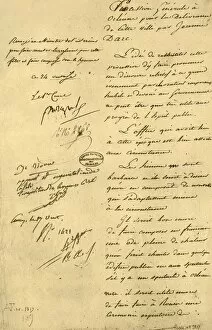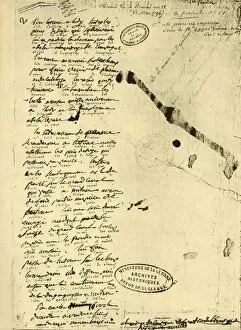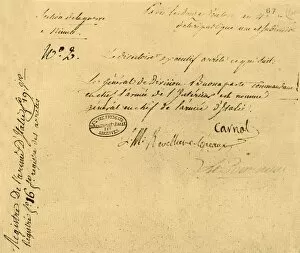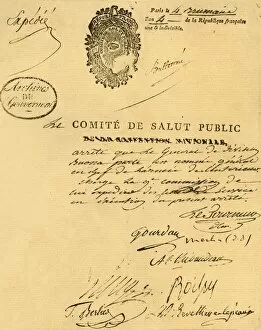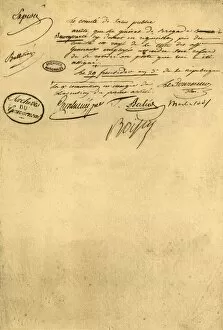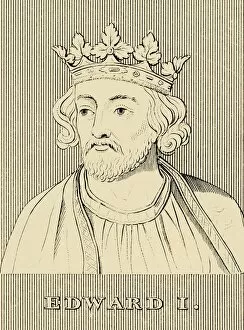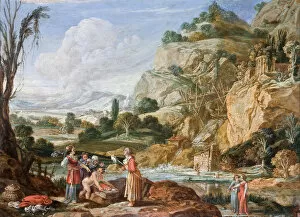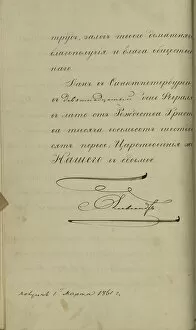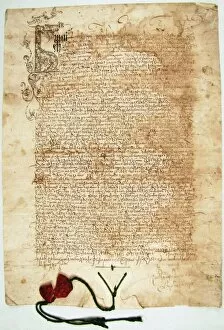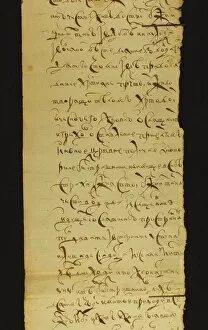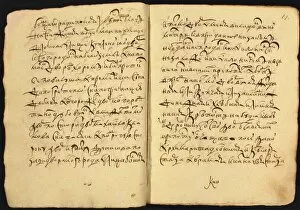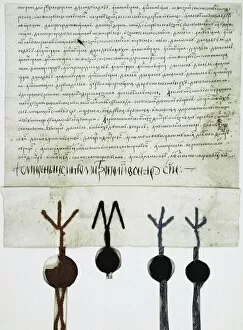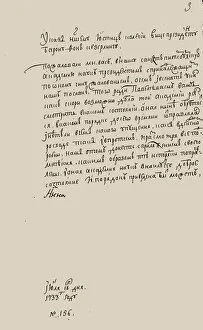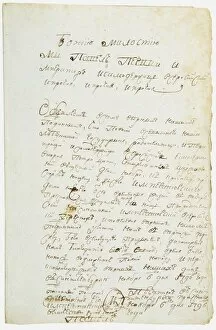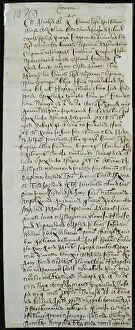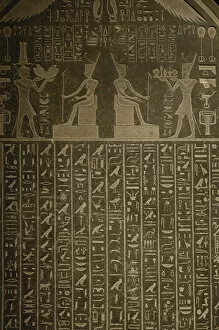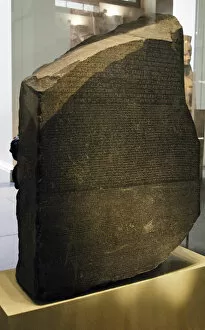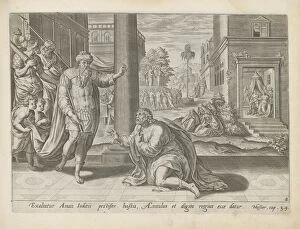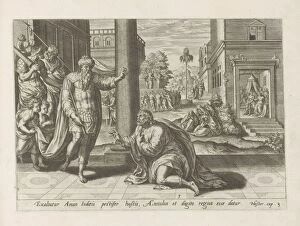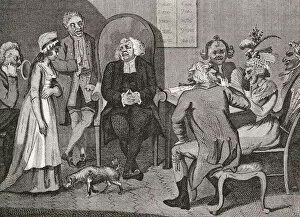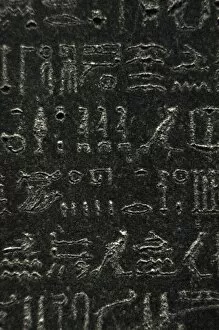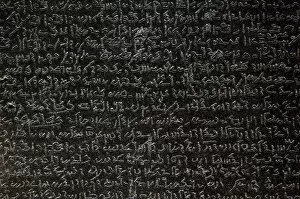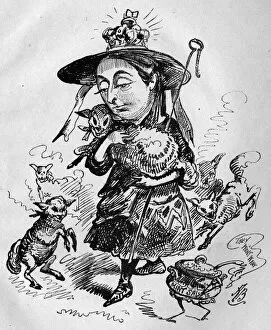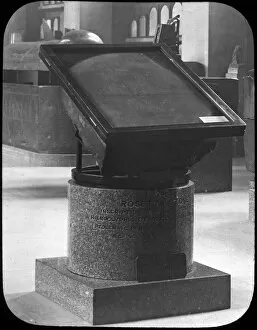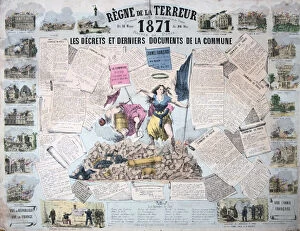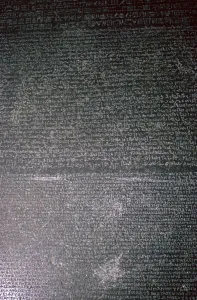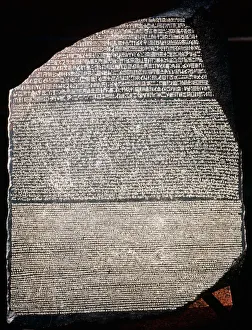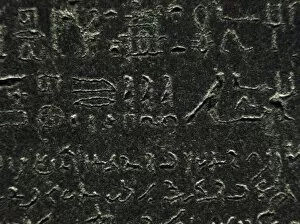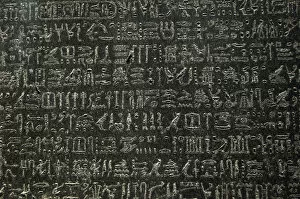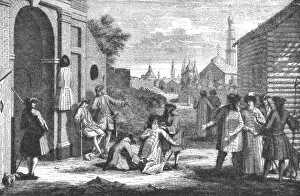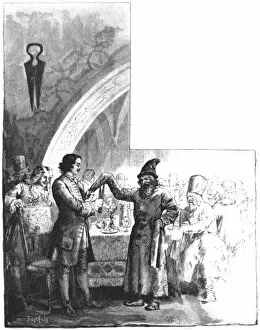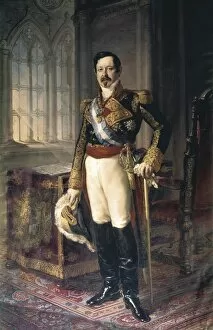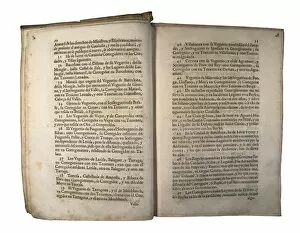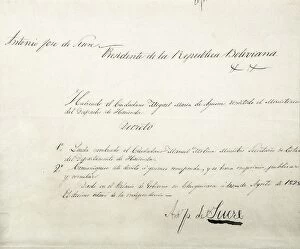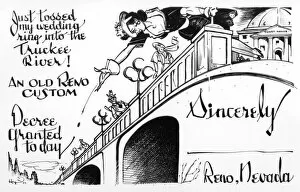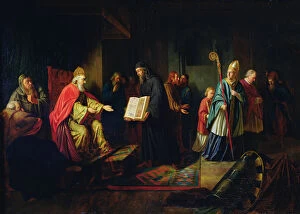Decree Collection (#2)
"Decree: The Power to Shape History" From the enchanting verses of Coleridge's "Kubla Khan" to the intricate illustrations found in the Decretum
For sale as Licensed Images
Choose your image, Select your licence and Download the media
"Decree: The Power to Shape History" From the enchanting verses of Coleridge's "Kubla Khan" to the intricate illustrations found in the Decretum, decrees have long held a significant role in shaping our world. Whether it be a money agreement or a political proclamation, these edicts carry immense weight and influence. In Tsar Nicholas II's solemn moment, as he reads the Opening Decree to the Duma, we witness the power that lies within his words. Similarly, Emperor Napoleon III and Baron Haussmann collaborated on transformative decrees that reshaped Paris into its modern glory. However, not all they are met with celebration. Elizabeth I of England made a fateful decree that sealed Mary's tragic fate. This somber event reminds us of how these proclamations can alter lives forever. During times of conflict and upheaval like the Spanish Civil War, powerful posters edited by governmental departments served as visual decrees rallying citizens towards their cause. Satirical cartoons also used humor to critique decisions such as Holland and Brabant's evacuation. Yet amidst historical turmoil, ancient artifacts like Egypt's Stele of Herakleion-Thonis remind us that even centuries ago, societies relied on written decrees for governance. The Naucratis decree etched onto this stele in 380 BCE stands as evidence of an early legal system. One cannot discuss influential decrees without mentioning one of history's most famous artifacts – The Rosetta Stone. With its hieroglyphic scripture unlocking ancient mysteries for modern scholars, this stone represents both an enigma and a key to understanding past civilizations' laws and customs. Through triumphs and tragedies alike, from literary masterpieces to political milestones captured in art or inscribed upon stones – each decree has left an indelible mark on human history. These declarations hold immense power; they shape nations' destinies while echoing through time, reminding us of the profound impact that words can have.

